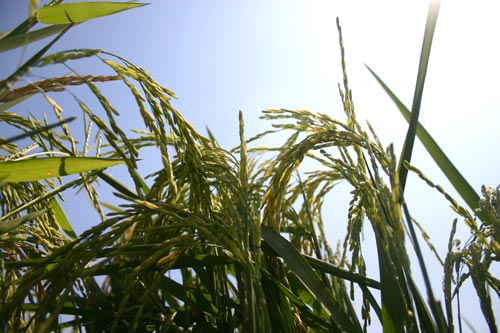
Update: for more on this, see Producers Rice Mill CEO: crop quality forces pool termination
Evidence that the Mid-South rice crop took a beating this growing season continues to pile up.
The latest comes from Stuttgart, Ark.-based Producers Rice Mill, which terminated its long-grain pricing pool mid-week. The mill cited “unprecedented quality problems combined with rising volatility of the Chicago rough rice futures” as the impetus for the move.
One rice farmer who uses Producers tells Delta Farm Press the news “came out of the blue.”
The mill’s letter to farmers reads:
“Termination Notice of 2010/2011 Long Grain Pricing Pool
“Effective Tuesday, October 26, 2010, at 3:20 p.m., the 2010 long grain price pool was terminated by the Board of Directors of Producers Rice Mill, Inc., as allowed under Section 5 of the Pricing Pool Addendum to the Member Rice Marketing and Drying Agreement.
“The historically low milling yields and extraordinarily high peck damage of the 2010 rice crop has dramatically reduced Producers’ ability to process this year’s rice crop compared to other marketing years. These unprecedented quality problems combined with the rising volatility of the Chicago rough rice futures (which reflect a significantly higher quality than the average 2010 rice crop), are the main reasons for the Board’s decision.
“All unpriced long grain rough rice, including unfulfilled orders and rice yet to be received will be placed into Producers’ long grain seasonal pool. While there is never a guarantee of future performance, Producers’ long grain seasonal pool has exceeded the national average price paid to U.S. rice farmers for the past 21 years according to USDA. All pricing pool contracts priced prior to this announcement will not be affected.
“We sincerely regret having to terminate our 2010/11 long grain pricing pool within the marketing year, but feel our action was necessary for the stated reasons.”
On Oct. 22, Chuck Wilson, Arkansas Extension rice specialist, elaborated on the problematic growing season, and said he’d never seen so many failures in a single year.
While much of the rice crop was planted early, heat and drought “played havoc,” said Wilson. “It was really hard to keep fields flooded. There were a lot of water shortage issues.”
For Wilson’s full comments, see Rice
Bacterial panicle blight was also widespread and “we had weed control issues because of the drought and wind. It was hard to get things done on time. Probably 1 million acres were planted over two weeks in April. That meant everyone was ready to spray and fertilize at the same time.”
Wilson suspected the crop was in trouble in mid-June. “I was driving around and saw areas of fields, hot spots, where rice was beginning to become severely drought-stressed. It was widespread — you could see problem spots in almost every field. Growers were unable to get water to those parts of fields.”
Later in the season, the crop began to look better. But Wilson “never had a good feeling about it. I thought the crop looked a whole lot better than it really was. My experience says that a combination of heat and drought doesn’t typically lend itself to high rice yields.”
Editor’s note: Keith Glover, Producers Rice Mill CEO, was traveling out of state on Thursday and Delta Farm Press was unable to get comment from the mill prior to press time. The story will be updated as more information becomes available.
About the Author(s)
You May Also Like




